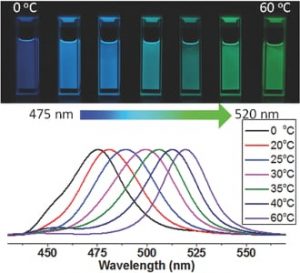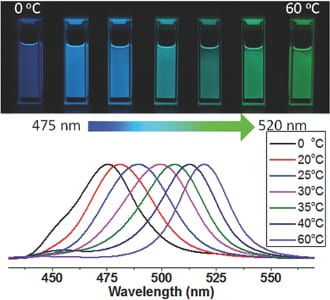 Perovskite semiconductors have the potential to be utilized in many areas, including in solar cells, due to their low preparation cost and suitable optical and electrical properties. New research published in Advanced Science by a team of Chinese researchers presents the control of the emission color of CH3NH3PbBr3 perovskite quantum dots using precipitation temperature. The researchers found that the emission peak of the nanoparticles could be adjusted over a range of 475–520 nm, corresponding to blue and green coloring, with a high emission quantum yield of between 74–93%.
Perovskite semiconductors have the potential to be utilized in many areas, including in solar cells, due to their low preparation cost and suitable optical and electrical properties. New research published in Advanced Science by a team of Chinese researchers presents the control of the emission color of CH3NH3PbBr3 perovskite quantum dots using precipitation temperature. The researchers found that the emission peak of the nanoparticles could be adjusted over a range of 475–520 nm, corresponding to blue and green coloring, with a high emission quantum yield of between 74–93%.
The high quantum yield generated by the perovskite quantum dots is believed to be the highest reported to date, and is likely due to the very short radiative lifetimes of the nanoparticles. The color control is achieved with a size-tuned bandgap that allows the ligand-assisted reprecipitation process to be controlled. The reported quantum yield values suggest that the new perovskite nanoparticles reported in this study may have good potential for use in optoelectronic applications such as photovoltaics and lasers due to their light emitting properties and color control.

















